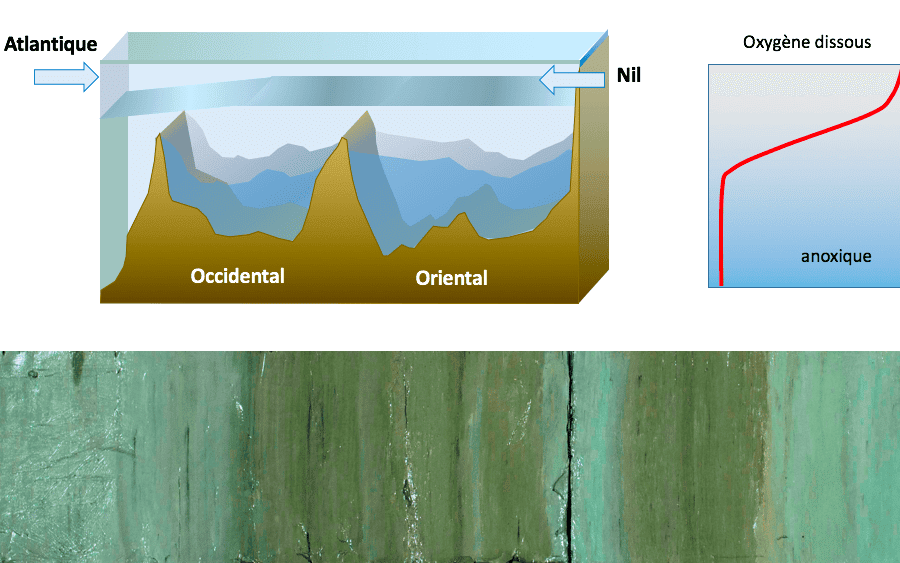ANR MedSens
The climate projections for the 21st century areème century indicate that the Mediterranean (Med) region will be warmer and drier, with a greater seasonal contrast.
Although warming and reduced river flow have antagonistic effects on surface water density in the Med, simulations suggest a reduction in circulation in the future, with the magnitude of the change depending on the models used.
The objective of the MedSens project is to evaluate the sensitivity of the Med Sea circulation to a hydrological/thermal disturbance in a warm climate condition with contrasting seasonality.
To address this issue, we combine reconstructions of Med conditions during high amplitude disturbance events from several proxies (indicators/trackers) with numerical simulations obtained with a high spatial resolution (1/8º) regional model integrating the evolution of some circulation proxies.
The focus is on the analysis of organic-rich sedimentary layers, called sapropels, deposited during periods of stagnant circulation in the Med. We are particularly interested in the S5 sapropel formed during the last interglacial, a warm period that can be compared to the simulated warming in the near future. The proposed strategy builds on the success of our previous work on reconstructing the circulation of the Med during the formation of the S1 sapropel (Holocene) using neodymium (eNd) isotopic composition measured on foraminifera, as well as the development of a regional modelling platform that allows the simulation of past Med circulation states.
The main innovative and original aspects of the MedSens project:
. combining proxies-based reconstructions with regional modelling integrating proxies (eNd and water oxygen) to study the past circulation in the Med Sea, which is internationally unique. This approach will allow a direct model-data comparison to assess the physical processes affecting the variability of the proxies and the performance of the model that will be used for future projections.
. a battery of multi-proxy tools (geochemistry and micropaleontology, including new potential tracers) applied to a series of sediment cores located along a large zonal transect to propose a robust reconstruction.
. the MiSo (Microfossil Sorter prototype, patent pending) automated tool for the rapid preparation of foraminiferal samples for geochemical and micropalaeontological analysis. It will contribute to the reconstruction of high spatial and temporal resolution.
2020-2025: ANR MedSens
CEREGE lead :
Kazuyo Tachikawa
Mediterranean thermohaline circulation sensitivity: lessons from the past for future
Partners : LSCE/LMD, GEOPS


